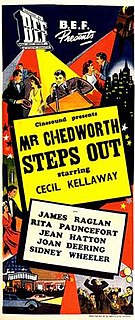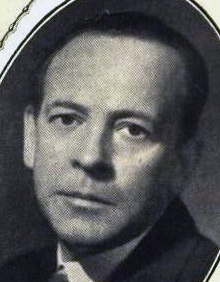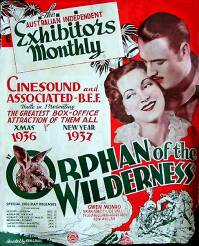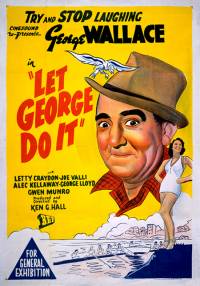Kenneth George Hall, AO, OBE, better known as Ken G. Hall, was an Australian film producer and director, considered one of the most important figures in the history of the Australian film industry. He was the first Australian to win an Academy Award.

Cinesound Productions Pty Ltd was an Australian feature film production company, established in June 1931, Cinesound developed out of a group of companies centred on Greater Union Theatres, that covered all facets of the film process, from production, to distribution and exhibition.

Mr. Chedworth Steps Out is a 1939 Australian comedy film directed by Ken G. Hall starring Cecil Kellaway. Kellaway returned to Australia from Hollywood to make the film, which features an early screen appearance by Peter Finch.

Frank Harvey was a British-born actor, producer and writer best known for his work in Australia.
Edmond Seward was a Hollywood screenwriter who had originally attended Northwestern University and worked as a journalist, before doing some writing for Disney.
The Squatter's Daughter is a 1933 Australian melodrama directed by Ken G. Hall and starring Jocelyn Howarth. One of the most popular Australian films of the 1930s, it is based on a 1907 play by Bert Bailey and Edmund Duggan which had been previously adapted to the screen in 1910.
The Silence of Dean Maitland is a 1934 Australian film directed by Ken G. Hall, and based on Maxwell Gray's novel of the same name. It was one of the most popular Australian films of the 1930s.

Thoroughbred is a 1936 Australian race-horse drama film directed by Ken G. Hall, partly based on the life and career of Phar Lap. Hollywood star Helen Twelvetrees was imported to Australian to appear in the film. The film also stars Frank Leighton and John Longden.

Orphan of the Wilderness is a 1936 Australian feature film from director Ken G. Hall about the adventures of a boxing kangaroo. It starred Brian Abbot who disappeared at sea not long after filming completed.
It Isn't Done is a 1937 Australian comedy film about a grazier who inherits a barony in England.

Lovers and Luggers is a 1937 Australian film directed by Ken G. Hall. It is an adventure melodrama about a pianist who goes to Thursday Island to retrieve a valuable pearl.
Tall Timbers is a 1937 action melodrama set in the timber industry directed by Ken G. Hall and starring Frank Leighton and Shirley Ann Richards.

Let George Do It is a 1938 comedy starring popular stage comedian George Wallace. It was the first of two films Wallace made for Ken G. Hall at Cinesound Productions, the other one being Gone to the Dogs (1939). Hall later called Wallace "in my opinion, easily the best comedian that this country has produced."
Gone to the Dogs is a 1939 musical comedy vehicle starring George Wallace. It was the second of two films he made for director Ken G. Hall, the first being Let George Do It (1938).

Dad Rudd, M.P. is a 1940 comedy that was the last of four films made by Ken G. Hall starring Bert Bailey as Dad Rudd. It was the last feature film directed by Hall prior to the war and the last made by Cinesound Productions, Bert Bailey and Frank Harvey.
Alec Kellaway (1894–1973) was a South African–born actor best known for his work in Australian theatre and film, notably playing a number of character roles for director Ken G. Hall. He was the brother of Cecil Kellaway. He also worked as a producer in vaudeville and helped run the Talent School at Cinesound Productions.
Frederick Joseph Thwaites was an Australian novelist whose books sold over four million copies. He was best known for his first work The Broken Melody, which was adapted into a 1938 film.
Pagewood Studios was a film studio in Sydney, Australia, that was used to make Australian, British and Hollywood films for twenty years.
The Mad Doctor is a 1935 novel by Australian author F. J. Thwaites, a melodramatic medical romance set in Africa.
John Fleeting, real name Claude Stuart Fleeting, was an Australian actor best known for his film appearances for Ken G. Hall.









